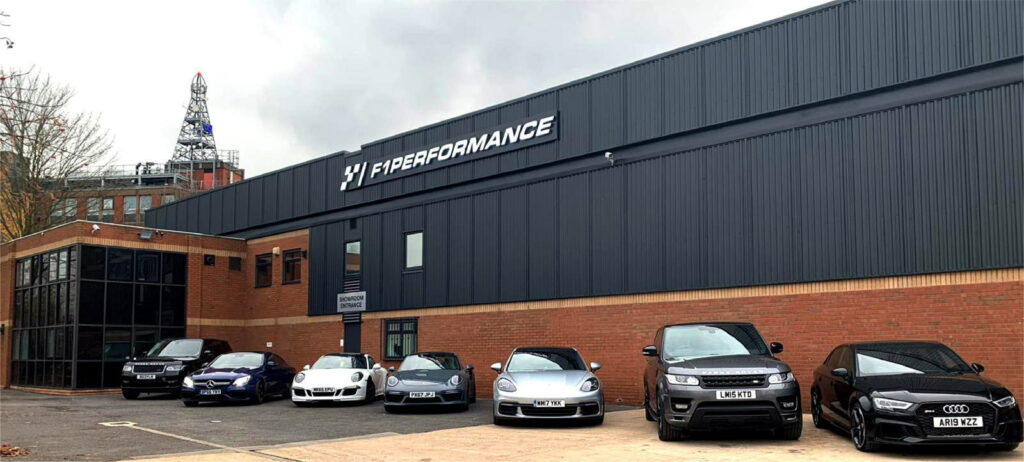10+ Years Experience
Specialist Spray Painters

Intumescent coating is a type of fire-resistant paint that expands when exposed to high temperatures, creating a protective char layer that insulates the underlying material.
In this article, we will explore how intumescent coating works, the different types available, its various uses such as fire protection and thermal insulation, as well as its advantages and disadvantages.
Our team at Commercial Spray Painters will also discuss the application process and effectiveness of intumescent coating in real-life fire scenarios. Contact our team now to receive a quote for fire protection paint at your property.
Intumescent coating is a specialised fire protection system that offers passive fire protection by expanding when exposed to heat to form a protective char layer, enhancing fire resistance.
This char layer acts as an insulating barrier, delaying the transfer of heat to the substrate underneath and preventing structural damage. Intumescent coatings are commonly used in buildings to protect steel structures from fire, providing crucial time for evacuation and firefighting efforts.
The expansion of the coating creates a thermal barrier, slowing down the spread of fire and buying valuable time for occupants to safely exit the premises. It is a vital element in ensuring the overall safety and fire resilience of structures.
Intumescent coating works by expanding rapidly when exposed to high temperatures, forming a thick, insulating char layer that acts as a physical barrier to prevent fire spread and protect the underlying surface.
When heat exposure occurs, the intumescent coating undergoes a chemical reaction, leading to the formation of carbonaceous char. This char is crucial as it swells, increasing in volume and reducing flammability.
As the char expands, it creates a protective barrier that insulates the substrate from the intense heat, slowing down the spread of fire. The process of char formation not only helps in heat absorption but also in the release of gases that inhibit further combustion reactions, effectively suppressing the fire.
There are several types of intumescent coatings, including thin-film, thick-film, and reactive coatings, each tailored for specific applications and levels of fire protection.
Thin-film intumescent coatings provide effective fire resistance with minimal coating thickness, making them suitable for applications where space or weight constraints are a concern.
These coatings expand and form an insulating char when exposed to high temperatures, creating a protective barrier that slows down the transfer of heat to the substrate.
This unique property allows thin-film intumescent coatings to provide significant fire protection despite their thin application, offering a solution for scenarios where traditional bulky fireproofing materials may not be feasible.
Industries such as aerospace, automotive, and marine engineering benefit greatly from the use of these coatings, as they meet stringent safety standards while minimising added weight or space requirements.
Thick-film intumescent coatings offer higher coating densities and enhanced fire ratings compared to thin-film variants, providing robust fire protection for structural elements.
This increased coating density allows thick-film intumescent coatings to expand significantly when exposed to high temperatures, forming a protective char that insulates the underlying substrate from heat.
As a result, these coatings are able to greatly improve the fire rating of structural components, offering a reliable solution for enhancing fire safety in buildings. Their ability to provide a thick, insulating barrier makes them suitable for applications where a high level of fire protection is required, ensuring that structural elements remain structurally sound in the event of a fire.
Reactive intumescent coatings trigger intumescence through specific chemical reactions when exposed to heat, rapidly expanding to form a protective barrier against fire hazards.
This unique property of intumescence is crucial in safeguarding surfaces from fire damage by creating a thick, insulating layer that slows down heat transfer. The chemical reactions triggered by heat cause the coating to swell and form a dense, charred layer that acts as a barrier to flames and helps prevent the spread of fire.
These coatings are designed to react quickly to rising temperatures, effectively buying time for evacuation and minimising property damage. This ability to swiftly form a protective shield has made reactive intumescent coatings invaluable in fire protection strategies across various industries.
Intumescent coating is primarily used for fire protection, thermal insulation, and corrosion protection in various building materials and steel structures.
This innovative coating serves a vital role in enhancing the fire resistance of steel structures by expanding and forming a protective char when exposed to high temperatures. The intumescent coating acts as a barrier, preventing the rapid spread of flames and providing valuable time for occupants to evacuate safely.
It contributes to thermal insulation by reducing heat transfer, improving energy efficiency, and maintaining a comfortable indoor environment. The corrosion protection properties of intumescent coatings help safeguard steel structures from rust and deterioration, prolonging their lifespan and structural integrity.
Intumescent coating offers advantages such as easy application, cost-effectiveness, minimal maintenance requirements, and an aesthetically pleasing finish for fireproofing applications.
This type of coating is highly sought after in industries and construction projects due to its simplicity when it comes to applying it onto surfaces. Its user-friendly application process not only saves time but also reduces labour costs significantly.
Its cost-effectiveness makes it an attractive option for projects with budget constraints, without compromising on quality. With intumescent coating, maintenance needs are minimal, allowing for long-term protection against fire hazards while also providing a sleek and visually appealing look to the protected surfaces.
Intumescent coatings are instrumental in providing fire protection by enhancing fire safety measures, preventing fire spread, and complying with building codes for improved fire prevention strategies.
These specialised coatings work by expanding when exposed to high temperatures, forming a protective char layer that insulates the underlying substrate from heat and flames. By effectively slowing down the rate of fire progression, intumescent coatings buy crucial time for occupants to evacuate safely and for firefighters to contain the blaze.
Their ability to meet rigorous building codes ensures that structures are equipped with the necessary safeguards to minimise the risk of fire-related incidents and uphold overall fire prevention standards.
Intumescent coatings offer effective thermal insulation properties, reducing heat transfer and maintaining surface temperatures within safe limits under high-temperature conditions.
This thermal insulation capability plays a crucial role in protecting structures from fire hazards by slowing down the rate of temperature increase during a fire outbreak. By expanding and forming a thick insulating layer when exposed to heat, intumescent coatings shield surfaces from direct contact with flames, thus preventing structural damage.
In addition to their fire-retardant properties, these coatings also contribute to energy efficiency by minimising heat loss, making them a sustainable choice for enhancing the safety and longevity of buildings in various applications.
Intumescent coatings provide corrosion protection by forming a robust and protective layer that shields surfaces from corrosive elements, extending the lifespan of structural components.
This protective layer acts as a barrier, preventing corrosive agents from penetrating the surface and causing degradation over time. By expanding and forming an insulating char when exposed to high temperatures, intumescent coatings effectively reduce the impact of fire on the underlying structure.
This unique property makes them valuable not only for corrosion protection but also for enhancing fire resistance, making them a versatile solution for maintaining the integrity and durability of various surfaces.
One of the key advantages of intumescent coatings is their easy application process, simplifying protective coating application and streamlining fireproofing procedures for various construction projects.
These coatings can be applied using methods such as on site spraying, brushing, or rolling, making them highly versatile and adaptable to different surfaces. Intumescent coatings are known for their user-friendly nature, allowing both professionals and DIY enthusiasts to easily utilise them without extensive training.
Their efficiency in fireproofing applications adds an extra layer of protection to structural elements, helping to prevent fire damage and improve overall safety measures on sites. This combined with their ease of use makes them a popular choice for architects, contractors, and building owners seeking reliable protective coatings.
Intumescent coatings offer a cost-effective solution for fireproofing requirements, providing economical fireproofing materials and solutions without compromising on fire protection efficiency.
These coatings serve as a budget-friendly option for various industries seeking reliable fireproofing solutions. By choosing intumescent coatings, businesses can ensure that their structures are adequately protected against fire hazards while staying within their financial constraints.
Their affordability makes them a popular choice for architects and contractors looking to balance quality and cost-effectiveness in their projects. With their proven track record in enhancing fire resistance, intumescent coatings stand out as practical and efficient fireproofing materials that deliver long-term value.
Intumescent coatings require minimal maintenance, ensuring the longevity of fireproof barriers and simplifying fireproofing techniques by reducing the need for frequent upkeep or repairs.
This aspect of intumescent coatings not only underlines their durability but also their efficiency in maintaining the integrity of fireproof barriers over an extended period. By requiring minimal upkeep, these coatings streamline fireproofing processes and contribute to a more sustainable and cost-effective approach to fire safety. Their ability to withstand the test of time without extensive maintenance requirements makes them a valuable asset in ensuring the ongoing effectiveness of fireproof barriers in various settings.
Intumescent coatings offer an aesthetically pleasing finish, with options such as intumescent paint that not only provide fire protection but also enhance the visual appeal of surfaces with a protective layer.
The use of intumescent paint for decorative purposes allows for a seamless integration of safety and style. These coatings can be applied to various surfaces, including wood, metal, and concrete, creating a visually pleasing effect while ensuring fire resistance.
By incorporating intumescent coatings, property owners can achieve both functional and aesthetic benefits, giving a modern and sleek appearance to their spaces. The combination of fire protection with an attractive protective layer offers a practical and visually appealing solution for enhancing the overall look of buildings and structures.
The application of intumescent coating involves surface preparation, precise mixing of the coating components, and utilising specific application techniques to achieve the desired fire protection outcomes.
The installation should be carried out by a professional to ensure correct application.
Surface preparation is a crucial initial step in ensuring the effectiveness of the intumescent coating. This involves cleaning the surface thoroughly to remove any dirt, oil, or other contaminants that could hinder adhesion. Any rust or corrosion should be removed and the surface should be primed if necessary.
Various application techniques such as spraying, brushing, or rolling can be used depending on the surface and project requirements for optimal results in fire protection.
If you would like to get a quote for application of intumescent paint, please make sure to contact our team.
The effectiveness of intumescent coating in fire protection is validated through rigorous testing, certification procedures, and real-life fire scenarios to assess its fire resistance capabilities.
These testing protocols involve subjecting the coated surfaces to extreme heat and flame exposure to determine the coating’s ability to swell and form a protective char layer, which insulates the substrate from fire.
Certification standards ensure that intumescent coatings meet specific performance criteria set by industry organisations, granting them a seal of approval for use in various applications.
Performance evaluations in real-life fires provide valuable insights into how these coatings behave under different fire conditions, highlighting their effectiveness in preventing the spread of flames and limiting structural damage.
The combination of thorough testing, certification, and real-world evaluations strengthens confidence in intumescent coatings as a reliable fire protection measure.
There are a range of other services that we can provide. Have a look at the list below for more information:
















We Aim To Reply To All Enquiries With-in 24-Hours